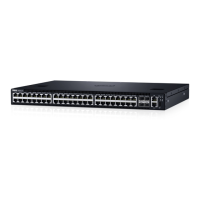Virtual Routing and Forwarding (VRF)
Virtual Routing and Forwarding (VRF) allows a physical router to partition itself into multiple Virtual Routers (VRs). The control and data
plane are isolated in each VR so that trac does NOT ow across VRs.Virtual Routing and Forwarding (VRF) allows multiple instances of a
routing table to co-exist within the same router at the same time.
VRF Overview
VRF improves functionality by allowing network paths to be segmented without using multiple devices. Using VRF also increases network
security and can eliminate the need for encryption and authentication due to trac segmentation.
Internet service providers (ISPs) often take advantage of VRF to create separate virtual private networks (VPNs) for customers; VRF is
also referred to as VPN routing and forwarding.
VRF acts like a logical router; while a physical router may include many routing tables, a VRF instance uses only a single routing table. VRF
uses a forwarding table that designates the next hop for each data packet, a list of devices that may be called upon to forward the packet,
and a set of rules and routing protocols that govern how the packet is forwarded. These VRF forwarding tables prevent trac from being
forwarded outside a specic VRF path and also keep out trac that should remain outside the VRF path.
VRF uses interfaces to distinguish routes for dierent VRF instances. Interfaces in a VRF can be either physical (Ethernet port or port
channel) or logical (VLANs). You can congure identical or overlapping IP subnets on dierent interfaces if each interface belongs to a
dierent VRF instance.
59
Virtual Routing and Forwarding (VRF) 955

